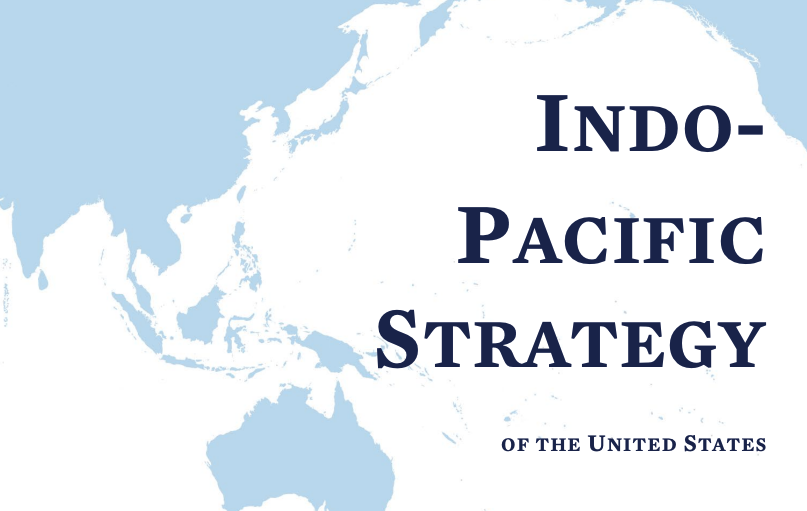
White House
Fact Sheet
“We envision an Indo-Pacific that is open, connected, prosperous, resilient, and secure—and we are ready to work together with each of you to achieve it.”
President Joe Biden (East Asia Summit, October 27, 2021)
The Biden-Harris Administration has made historic strides to restore American leadership in the Indo-Pacific and adapt its role for the 21st century. In the last year, the United States has modernized its longstanding alliances, strengthened emerging partnerships, and forged innovative links among them to meet urgent challenges, from competition with China to climate change to the pandemic. It has done so at a time when allies and partners around the world are increasingly enhancing their own engagement in the Indo-Pacific; and when there is broad, bipartisan agreement in the U.S. Congress that the United States must, too. This convergence in commitment to the region, across oceans and across political-party lines, reflects an undeniable reality: the Indo-Pacific is the most dynamic region in the world, and its future affects people everywhere.
That reality is the basis of the Indo-Pacific Strategy of the United States. This strategy outlines President Biden’s vision to more firmly anchor the United States in the Indo-Pacific and strengthen the region in the process. Its central focus is sustained and creative collaboration with allies, partners, and institutions, within the region and beyond it.
The United States will pursue an Indo-Pacific region that is:
FREE AND OPEN
Our vital interests and those of our closest partners require a free and open Indo-Pacific, and a free and open Indo-Pacific requires that governments can make their own choices and that shared domains are governed lawfully. Our strategy begins with strengthening resilience, both within individual countries, as we have done in the United States, and among them. We will advance a free and open region, including by:
– Investing in democratic institutions, a free press, and a vibrant civil society
– Improving fiscal transparency in the Indo-Pacific to expose corruption and drive reform
– Ensuring the region’s seas and skies are governed and used according to international law
– Advancing common approaches to critical and emerging technologies, the internet, and cyber space
2. CONNECTED
A free and open Indo-Pacific can only be achieved if we build collective capacity for a new age. The alliances, organizations, and rules that the United States and its partners have helped to build must be adapted. We will build collective capacity within and beyond the region, including by:
– Deepening our five regional treaty alliances with Australia, Japan, the Republic of Korea (ROK), the Philippines, and Thailand
– Strengthening relationships with leading regional partners, including India, Indonesia, Malaysia, Mongolia, New Zealand, Singapore, Taiwan, Vietnam, and the Pacific Islands
– Contributing to an empowered and unified ASEAN
– Strengthening the Quad and delivering on its commitments
– Supporting India’s continued rise and regional leadership
– Partnering to build resilience in the Pacific Islands
– Forging connections between the Indo-Pacific and the Euro-Atlantic
– Expanding U.S. diplomatic presence in the Indo-Pacific, particularly in Southeast Asia and the Pacific Islands
3. PROSPEROUS
The prosperity of everyday Americans is linked to the Indo-Pacific. That fact requires investments to encourage innovation, strengthen economic competitiveness, produce good-paying jobs, rebuild supply chains, and expand economic opportunities for middle-class families: 1.5 billion people in the Indo-Pacific will join the global middle class this decade. We will drive Indo-Pacific prosperity, including by:
– Proposing an Indo-Pacific economic framework, through which we will:
• Develop new approaches to trade that meet high labor and environmental standards
• Govern our digital economies and cross-border data flows according to open principles, including through a new digital economy framework
• Advance resilient and secure supply chains that are diverse, open, and predictable
• Make shared investments in decarbonization and clean energy
– Promoting free, fair, and open trade and investment through the Asia-Pacific Economic Cooperation (APEC), including in our 2023 host year
– Closing the region’s infrastructure gap through Build Back Better World with G7 partners
4. SECURE
For 75 years, the United States has maintained a strong and consistent defense presence necessary to support regional peace, security, stability, and prosperity. We are extending and modernizing that role and enhancing our capabilities to defend our interests and to deter aggression against U.S. territory and against our allies and partners. We will bolster Indo-Pacific security, drawing on all instruments of power to deter aggression and to counter coercion, including by:
– Advancing integrated deterrence
– Deepening cooperation and enhancing interoperability with allies and partners
– Maintaining peace and stability across the Taiwan Strait
– Innovating to operate in rapidly evolving threat environments, including space, cyberspace, and critical- and emerging-technology areas
– Strengthening extended deterrence and coordination with our ROK and Japanese allies and pursuing the complete denuclearization of the Korean Peninsula
– Continuing to deliver on AUKUS
– Expanding U.S. Coast Guard presence and cooperation against other transnational threats
– Working with Congress to fund the Pacific Deterrence Initiative and the Maritime Security Initiative
5. RESILIENT
The Indo-Pacific faces major transnational challenges. Climate change is growing ever-more severe as South Asia’s glaciers melt and the Pacific Islands battle existential rises in sea levels. The COVID-19 pandemic continues to inflict a painful human and economic toll across the region. And Indo-Pacific governments grapple with natural disasters, resource scarcity, internal conflict, and governance challenges. Left unchecked, these forces threaten to destabilize the region. We will build regional resilience to 21st-century transnational threats, including by:
– Working with allies and partners to develop 2030 and 2050 targets, strategies, plans, and policies consistent with limiting global temperature increase to 1.5 degrees Celsius
– Reducing regional vulnerability to the impacts of climate change and environmental degradation
– Ending the COVID-19 pandemic and bolstering global health security
